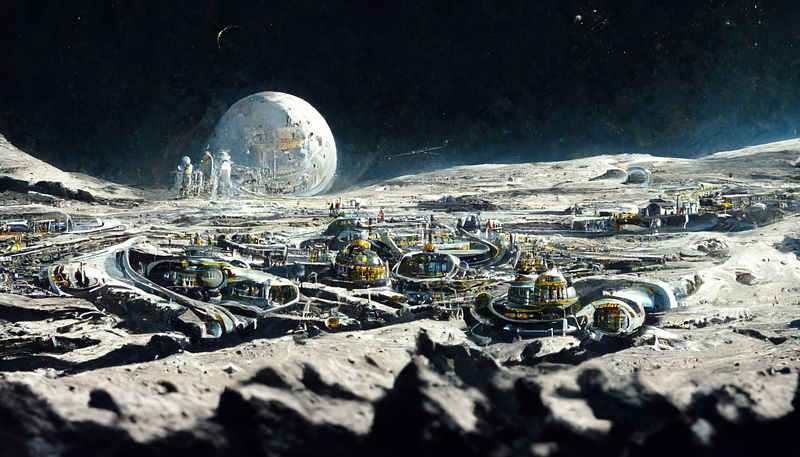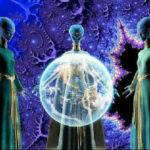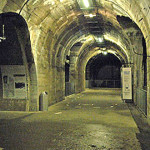In recent years, the question of whether there is extraterrestrial civilization on the Moon has sparked widespread debate and discussion. The existence of mysterious structures, ruins, and the potential presence of extraterrestrial life on the Moon have become focal points for both the scientific community and the general public. Revelations of inadvertently released news briefs and numerous satellite images by official sources in the United States seem to suggest that there might be something unusual on the Moon, yet these findings have been shrouded in secrecy by the National Aeronautics and Space Administration (NASA) for an extended period, leading to suspicions about hidden truths.
1. Scientists’ Discoveries and Cautious Statements
In 1996, during a national press conference, scientists and engineers from NASA unveiled their findings about the Moon to the public for the first time. It was reported that they discussed the presence of unidentified objects and structures, but their language was consistently cautious, deliberately avoiding direct references to the possibility of extraterrestrial life. Although scientists believed that these objects could be of artificial origin, they maintained that further in-depth research was needed to arrive at definitive conclusions, with the official results expected to be released in due course.

2. Revealing Moon’s Mysterious Structures
Reports suggest that as far back as several decades ago, the Soviet Union confirmed the existence of some kind of artificial activity on the Moon through their photographic evidence. Images and videos captured by the “Sun Gods” and space stations revealed numerous indications of structures that appeared unnatural on the Moon’s surface, challenging conventional geological explanations. Additionally, images and videos captured by American astronomers as part of the “Sun Gods” project exhibited astonishing scenes. However, the question remains as to why this data was not publicly disclosed earlier. NASA experts responded by indicating that the disclosure of potential biological activity on the Moon could trigger unpredictable societal responses, coupled with other sensitive reasons.
3. Extraterrestrial Groups and Urban Ruins
Moon researcher, Ho Gelan, mentioned that NASA is currently attempting to modify and process the previously captured photographic data for future public release. He believes that the Moon might have served as a base for some form of extraterrestrial group during their activities on Earth. Reports suggest that remnants of cities extend for miles on the Moon’s surface. These remnants include vast subterranean chambers with enormous domed roofs, intricate tunnel systems, and other mysterious structures, challenging scientists to reevaluate their understanding of the Moon. Some scientists have even ventured to propose that the Moon might be a creation of extraterrestrial civilizations, existing for billions of years as a cosmic outpost for extraterrestrial life.

4. Exploration of the “Hollow Moon” Hypothesis
The Moon’s origin and characteristics have posed numerous questions for scientists. The “hollow moon” hypothesis suggests that the Moon is actually a modified spacecraft, and extraterrestrial beings might control its rotation from its dark side. While there are both supporters and skeptics of this theory, no definitive conclusion has been reached. Additionally, some argue that the shallow depths of lunar impact craters contrast with those typically observed on natural celestial bodies, raising further doubts about the Moon’s true nature.
Conclusion
Despite ongoing debate, a definitive answer regarding the presence of extraterrestrial civilization on the Moon remains elusive. Scientists continue to conduct research and observations, striving to uncover the truth behind the Moon’s mysteries. As technology advances, human understanding of the Moon continues to expand. Perhaps in the future, humanity will establish laboratories in lunar orbit, construct observatories free from Earth’s atmospheric interference, and even establish bases for launching expeditions to distant planets. Regardless of the eventual outcome, curiosity about the potential existence of extraterrestrial life in the universe will persist, motivating scientists to explore this enigmatic subject further. The enigma of the Moon’s backside ruins and unidentified structures, whether they signify the presence of extraterrestrial civilization or hold other explanations, remains a topic that requires further investigation. Ultimately, humanity’s desire to unveil the mysteries of the cosmos will continue to guide scientific endeavors and explorations in this fascinating field.








